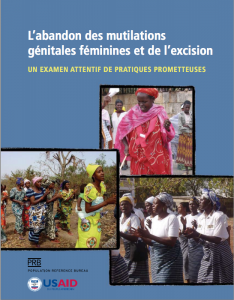In December 2002, as efforts towards abandonment of female genital mutilation/cutting (FGM/C) continued to gain momentum worldwide, the Female Genital Cutting Interagency Working Group of the U.S. Agency for International Development (USAID) realized that the field had entered a new stage. While previously the focus had been primarily on defining FGM/C, on determining where it existed, what forms it took, even what terminology to use, it became clear to all the organizations represented in the working group that attention needed to shift to managing to information that was available and filling whatever information gaps still existed. And most importantly, more information was needed on interventions that successfully promote the abandonment of FGM/C.
After nearly four years and numerous surveys, questionnaires, in-country interviews, intermediate products, and the collaborative efforts of many groups, the result is this publication. In it, the authors present an in-depth look at three promising interventions identified through collaboration by five organizations: the Population Reference Bureau, Family Health International, PATH, Population Council, and the Manoff Group.
Because so much excellent material has been published in the last ten years on defining FGM/C, describing the four types of cutting, and exploring the various approaches used and prevalence by country, this publication will not replicate those efforts. Its objective is to meet the primary information need identified by hundreds of organizations and individuals working toward the abandonment of FGM/C: information on case studies that illustrate what is working and why.
Download here

